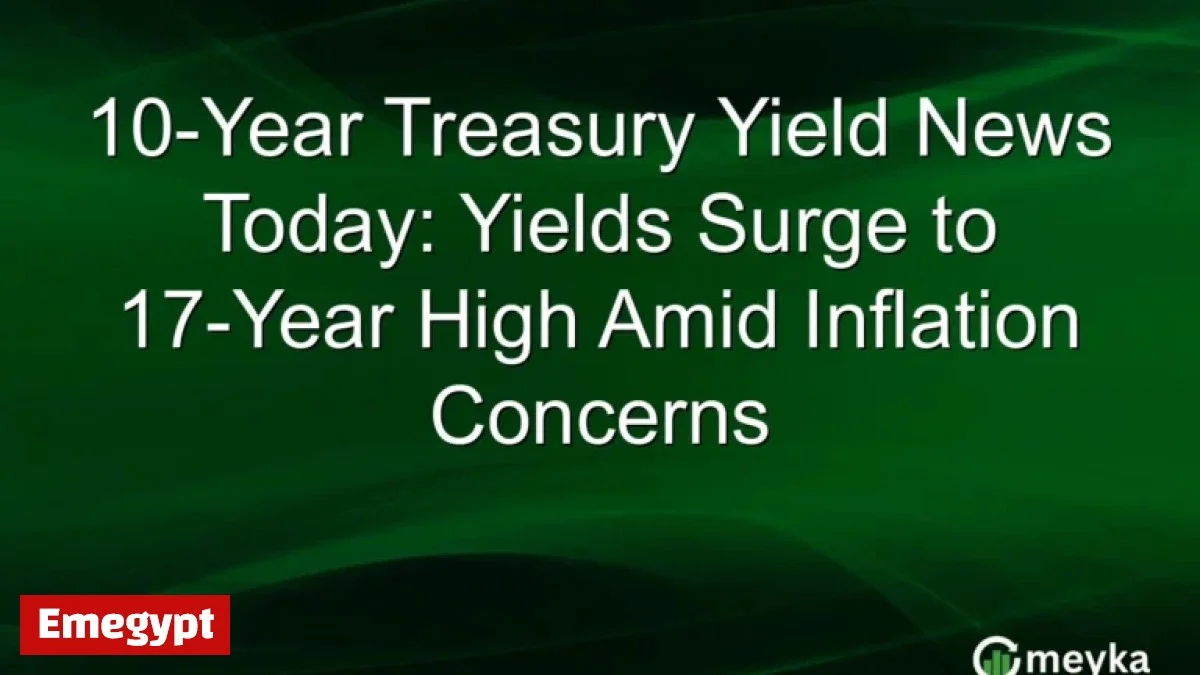
The recent surge in the 10year Treasury yield has captured the attention of investors and analysts alike. This yield recently hit 4.85%, marking its highest point since 2008. Such levels have not been seen in 17 years, driven chiefly by rising inflation concerns.
Understanding the Rise in 10Year Treasury Yields
Recent inflation data exceeded expectations, prompting speculation surrounding the Federal Reserve’s interest rate plans. With inflation remaining persistently high, investors are worried that the Fed will maintain elevated interest rates for a more extended period. This situation is causing significant shifts across various financial markets.
Implications for Borrowing Costs
The 10year Treasury yield is a key indicator for longterm interest rates. When yields increase, borrowing costs typically rise. This trend affects:
- Government borrowing
- Corporate financing
- Consumer loans, including mortgages
Impact on the Bond Market
In the U.S. bond market, heightened volatility is apparent as investors adjust their strategies in response to rising yields. Higher yields contribute to lower bond prices, initiating a substantial repricing across the entire bond market.
Shifts in Equity Markets
The stock markets are also experiencing considerable turbulence. Investors are increasingly avoiding growth stocks, which are more sensitive to interest rate hikes. Instead, they are gravitating towards value stocks, which are generally more stable in highrate environments, reflecting a broader change in investor sentiment.
Federal Reserve Policy on Interest Rates
Monitoring the Federal Reserve’s actions is crucial as they navigate the complex landscape of persistent inflation. Analysts are closely watching for potential signals regarding future interest rate adjustments. The balance between controlling inflation and fostering economic growth remains delicate.
Key Takeaways for Investors
The recent escalation in the 10year Treasury yield underscores the intricate relationship between inflation and interest rates. Investors are encouraged to reassess their portfolios, particularly regarding interestsensitive assets. Continuous vigilance on Federal Reserve communications and economic trends will be vital for making informed decisions in this fluctuating environment.
FAQs
| Question | Answer |
|---|---|
| Why did the 10year Treasury yield reach a 17year high? | Unexpected inflation data has led to speculation about prolonged high interest rates by the Federal Reserve. |
| How does a rise in the 10year Treasury yield affect the economy? | It increases borrowing costs, influencing mortgage rates and corporate borrowing, potentially slowing economic growth. |
| What should investors do in response to rising Treasury yields? | Monitor Federal Reserve policies and consider reallocating portfolios towards less ratesensitive investments. |
As market conditions evolve, keeping an eye on the 10year Treasury yield is critical for understanding the broader financial landscape.
